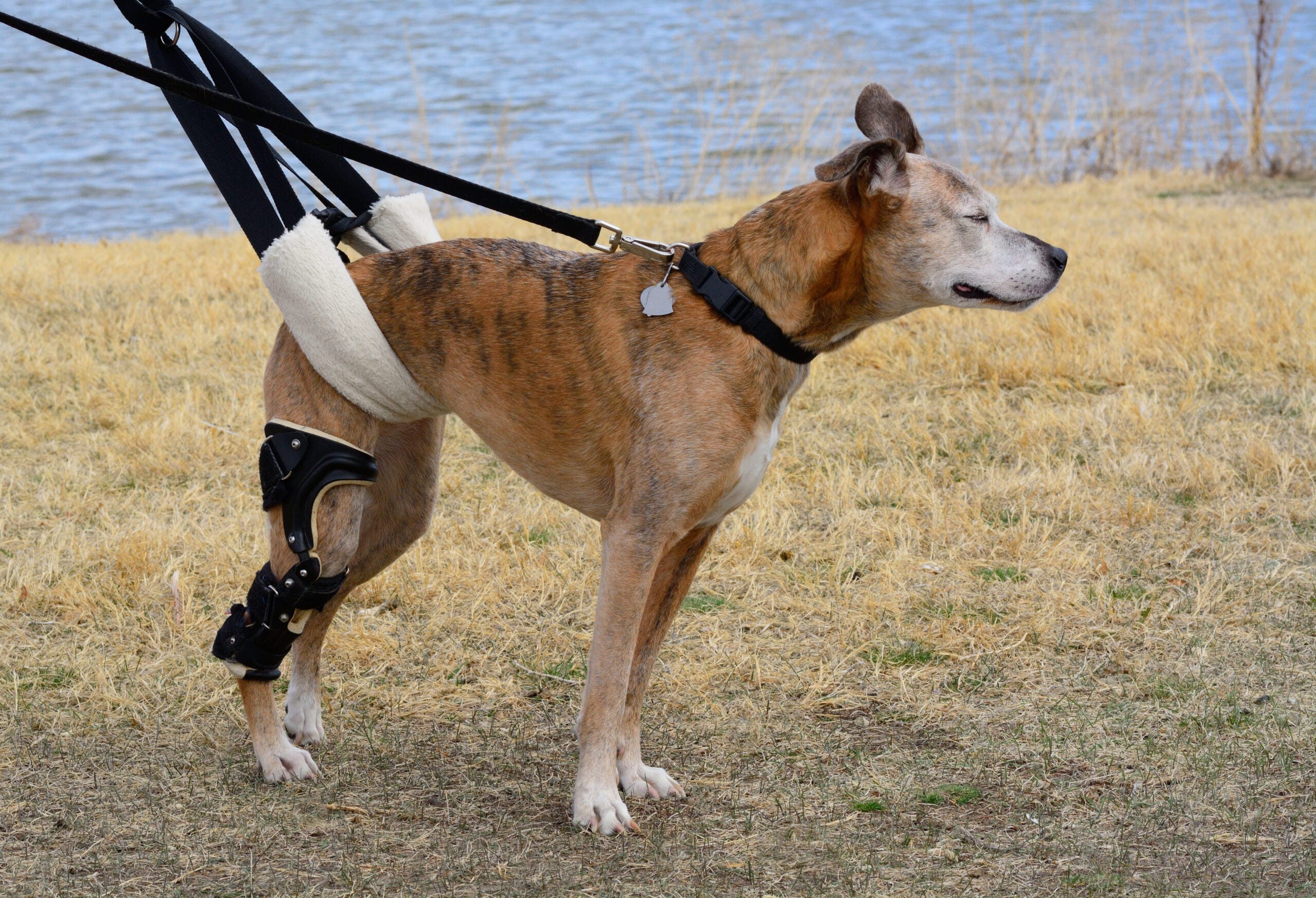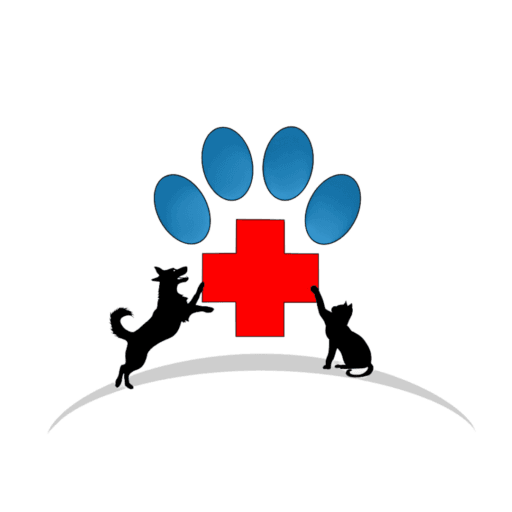When your dog faces cranial cruciate ligament (CCL) surgery, also commonly known as dog ACL surgery, understanding the recovery process is crucial for their successful healing. The journey back to normal activities requires patience, dedication, and careful adherence to your veterinary surgeon’s guidelines.
Just like humans recovering from knee surgery, dogs need a structured rehabilitation plan to ensure proper healing and prevent re-injury. In this comprehensive guide, we’ll walk you through what to expect during your dog’s recovery timeline and provide practical tips for supporting their healing process.
Understanding Dog ACL Injuries
The cranial cruciate ligament (CCL) in dogs, equivalent to the anterior cruciate ligament (ACL) in humans, is a crucial stabilizing tissue in your dog’s knee joint. This ligament connects the femur (thighbone) to the tibia (shinbone) and plays a vital role in your dog’s mobility and joint stability. When this ligament tears or ruptures, it can significantly impact your dog’s ability to walk, run, and perform daily activities.
Functions of a Dog ACL
- Joint Stability: The dog ACL prevents the tibia from sliding forward relative to the femur, maintaining proper knee alignment during movement and rest.
- Movement Control: This ligament helps control rotational movement of the knee, preventing excessive internal rotation of the tibia.
- Weight Distribution: The dog ACL assists in proper weight distribution across the knee joint, reducing stress on other joint components.
- Proprioception: It contains nerve endings that provide feedback about joint position and movement, helping your dog maintain balance and coordination.
Common Causes of Dog ACL Injuries
- Acute Trauma: Sudden twisting of the knee during active play or exercise can cause immediate ligament damage.
- Obesity: Excess weight puts additional stress on the joint, increasing the risk of ACL tears.
- Age-Related Degeneration: As dogs age, their ligaments can weaken and become more susceptible to injury.
- Breed Predisposition: Certain breeds, particularly larger dogs like Labrador Retrievers and German Shepherds, are more prone to dog ACL injuries.
- Chronic Stress: Repetitive stress from activities like agility training or frequent jumping can lead to gradual ligament deterioration.
Diagnosing Dog ACL Injuries
Early detection and diagnosis of ACL injuries are crucial for preventing further damage and determining the most effective treatment plan. Your veterinary surgeon will need to conduct a thorough examination to assess the extent of the injury and recommend appropriate treatment options.
Signs and Symptoms to Watch Out For
- Limping: Sudden or gradual onset of lameness in one or both hind legs. This may be more noticeable after exercise or when getting up from rest.
- Abnormal Sitting Position: Dogs may sit with the affected leg extended outward rather than in a normal tucked position.
- Reduced Activity: Your dog may show reluctance to jump, climb stairs, or engage in normal play activities.
- Muscle Atrophy: Over time, you might notice decreased muscle mass in the affected leg due to reduced use.
- Joint Swelling: The knee joint may appear swollen or feel warm to the touch.
Veterinary Examination Process
- Medical History Review: Your vet will gather information about your dog’s symptoms, activity level, and any recent incidents that might have caused injury.
- Physical Examination: The vet will observe your dog’s gait and perform specific tests to check joint stability and range of motion.
- Drawer Test: This specific manipulation checks for abnormal forward movement of the tibia, indicating ACL damage.
- Imaging Tests: X-rays or other imaging may be recommended to confirm the diagnosis and check for additional joint problems.
- Arthritis Assessment: Your vet will evaluate for any signs of existing arthritis, which can affect treatment decisions.
Treatment Options Depending on Diagnosis
- Conservative Management: For partial tears or small dogs, rest, medications, and physical therapy might be recommended initially.
- Surgical Repair: Complete tears typically require surgical intervention to stabilize the joint and prevent arthritis progression.
- Post-Treatment Rehabilitation: Regardless of treatment choice, a structured rehabilitation plan is essential for optimal recovery.
- Pain Management: Various options for managing discomfort during the healing process will be discussed based on your dog’s specific needs.
Surgical Treatment for Dog ACL Injuries
When conservative treatment isn’t sufficient, surgical intervention becomes necessary to restore stability to your dog’s knee joint. The decision to pursue surgery should be made in consultation with your veterinary surgeon, considering factors such as your dog’s age, size, activity level, and overall health status.
What to Expect During Surgery
- Pre-surgical Evaluation: Your dog will undergo pre-operative blood work and a physical examination to ensure they’re healthy enough for surgery.
- Anesthesia: A safe, tailored anesthetic protocol will be administered to keep your dog comfortable during the procedure.
- Surgical Procedure: The surgeon will perform one of several possible techniques to stabilize the knee joint.
- Joint Inspection: The surgeon will examine the joint for any additional damage or complications that need addressing.
- Closure: The surgical site will be carefully closed with multiple layers of sutures.
The typical dog ACL surgery takes between 1.5 to 3 hours to complete, depending on the specific technique used and any complications encountered during the procedure. This timeframe includes preparation, the actual surgical procedure, and immediate post-operative care. Your veterinary surgeon will provide more specific timing based on your dog’s individual case and the chosen surgical technique.
A Complete Recovery Timeline After Dog ACL Surgery
- First 24-48 Hours: Your dog will need constant supervision and strict rest. Pain medication and antibiotics will be administered as prescribed by your veterinary surgeon.
- Days 3-7: Minimal movement with only necessary bathroom breaks on a short leash. Ice packs may be applied to reduce swelling and manage discomfort.
- Weeks 1-2: Continue restricted movement with short, controlled leash walks lasting 5-10 minutes, 3-4 times daily. Monitor the surgical site for any signs of infection.
- Weeks 2-4: Gradually increase walk duration to 10-15 minutes while maintaining leash control. Some dogs may begin basic physical therapy exercises under professional guidance.
- Weeks 4-8: Walk duration can extend to 15-20 minutes with continued controlled movement. Introduction of gentle strengthening exercises may begin.
- Weeks 8-12: If healing progresses well, walk duration can increase to 20-30 minutes. Some dogs may start more advanced rehabilitation exercises.
- Weeks 12-16: Gradual return to normal activities begins, though high-impact activities should still be avoided.
- 4-6 Months: Most dogs can return to full activity, though each case varies based on individual recovery progress.
Factors Affecting Recovery
- Dog Size and Weight: Larger dogs typically require longer recovery periods due to increased stress on the joint. Weight management is crucial during recovery.
- Age and Overall Health: Senior dogs or those with other health conditions may need extended recovery time. Younger, healthier dogs often recover more quickly.
- Surgical Technique Used: Different surgical approaches may affect the recovery timeline and rehabilitation protocols.
- Compliance with Recovery Protocol: Strictly following post-operative care instructions significantly impacts healing success and recovery speed.
- Pre-existing Joint Conditions: Dogs with arthritis or other joint issues may require modified rehabilitation plans and longer recovery periods.
Steps and Guidelines for Proper Post Dog ACL Surgery Care
Proper post-operative care is crucial for successful recovery after dog ACL surgery. Following your veterinary surgeon’s guidelines helps prevent complications and ensures optimal healing. Your dedication to the recovery process directly impacts your dog’s return to normal activities.
Essential Care Guidelines
- Medication Management: Administer all prescribed medications exactly as directed. Keep a log of medication times and dosages to ensure consistency.
- Wound Care: Keep the surgical site clean and dry, monitoring for signs of infection such as redness, swelling, or discharge.
- Activity Restriction: Use a crate or small room to limit movement during the initial recovery phase. Prevent jumping, running, or climbing stairs.
- Rehabilitation Exercises: Follow the prescribed physical therapy routine exactly as demonstrated by your veterinary professional.
- Diet and Hydration: Maintain proper nutrition and ensure fresh water is always available to support healing.
- Environmental Modifications: Create a safe, slip-free recovery space with easy access to necessities.
The Benefits of Surgery for Dog ACL Injuries
Improved Mobility and Function
Surgery for dog ACL injuries provides significant improvement in joint stability and function. Most dogs experience a dramatic reduction in lameness and pain following successful recovery. Your pet can typically return to normal activities with proper rehabilitation, though the timeline varies for each case.
Prevention of Further Joint Damage
Early surgical intervention helps prevent additional damage to the joint structures. Without surgery, continued instability can lead to meniscal tears and accelerated arthritis development. The procedure helps maintain proper joint alignment and reduces the risk of future complications.
Enhanced Quality of Life
Following successful dog ACL surgery and rehabilitation, most dogs experience a significantly improved quality of life. They can resume their favorite activities, maintain a healthy weight through exercise, and enjoy pain-free movement. This improvement often leads to better mental well-being and increased activity levels.
Long-term Joint Health
Surgical repair provides long-term benefits for joint health and function. The procedure helps maintain proper joint mechanics and reduces the risk of arthritis progression. With appropriate post-operative care and ongoing management, many dogs maintain good joint function for years after surgery.
Conclusion
Understanding and following the proper recovery timeline after dog ACL surgery is crucial for your pet’s successful rehabilitation. While the journey requires patience and dedication, the long-term benefits of proper post-surgical care are well worth the effort.
Remember that every dog’s recovery is unique, and working closely with your veterinary surgeon ensures the best possible outcome. By following their guidelines and maintaining a consistent rehabilitation routine, you can help your furry friend return to a happy, active lifestyle.





 We are now offering Urgent Care!
We are now offering Urgent Care!